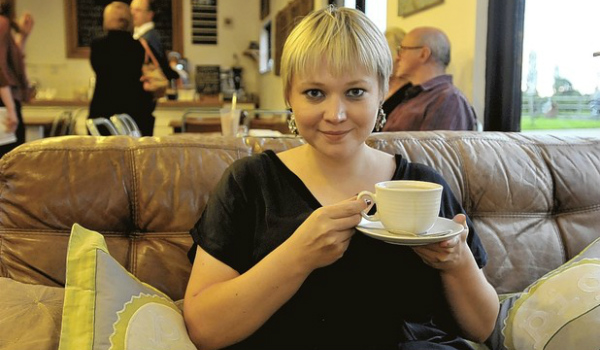Louise Winter is a funeral professional and the founder of Poetic Endings – a modern funeral service creating funerals of style and substance, relevance and meaning. She’s also the editor of the Good Funeral Guide – the only independent guide to the funeral industry and a not-for-profit resource that helps consumers to get the funeral they actually want in an entirely unregulated industry. She’s also the director of Life. Death. Whatever. – a festival exploring all aspects of life and death that ran in partnership with the National Trust in 2016. Louise writes for Run Riot on eight ways to explore mortality in the city, from anatomy at the Wellcome to morbidly funny cabaret.
In England, death has lurked mysteriously behind the opaque windows and dusty net curtains of funeral directors for far too long, existing in a strange realm that looks like a cross between a travel agency of yesteryear and a nursing home.
As a funeral professional who runs a modern funeral service, I’m always trying to find innovative and interesting ways to get people engaging with death before it happens to someone they love and they’re faced with the often unknown task of arranging a funeral.
I’m the director of Life. Death. Whatever., a ground-breaking festival that ran in partnership with the National Trust in 2016. It was a playful way of getting people to talk about death, featuring artwork by Philip Eglin, Stella Vine and Laura Ford, an interactive coffin playroom, birth workshops and supper clubs created from life affirming herbs. There were no skulls, cemeteries or traditional symbols of death in sight; only stimulating conversation, cake, cocktails, tea and tears.
Talking about death doesn’t need to be morbid, gloomy or depressing. If you’re looking for a way to have a conversation about it and need something to kick-start it, here are my favourite ways to explore your mortality in London.
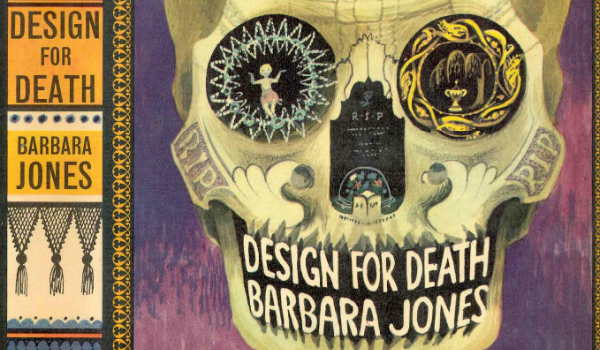
1. Explore death and dying at the Wellcome Collection
The Wellcome Collection isn’t a death destination in itself, although it did run a very successful exhibition about death in 2012 that attracted thousands of visitors. It’s a beautifully designed space on Euston Road designed to explore health, medicine and innovation. But with those topics, exploring the inevitable becomes inevitable. So inadvertently, the Wellcome Collection is a destination for the death curious.
My favourite hangout is the turquoise Reading Room, a hybrid of gallery, library and events space with a cushioned staircase and plenty of chairs in which to relax. The beautiful space is curated into ten sections – travel, alchemy, food, faith, lives, mind, pain, face, breath and body. An array of fascinating books exploring all aspects of death and dying can be unearthed in each section, and there are interactive exhibits and games.
My favourite book isn’t found in the Reading Room but lives on a bookshelf in the Medicine Man exhibition on the first floor. It’s a book from the sixties called ‘Design for Death’ by Barbara Jones and explores why we deal with the dead in the way that we do. It’s enlightening to see how little has changed in the UK funeral industry since the book was written.
What’s more, you can finish off your visit with afternoon tea at the serene restaurant on the second floor, opposite the Reading Room. It’s a bit of a secret as most visitors queue at the noisy café on the ground floor instead.
https://wellcomecollection.org/
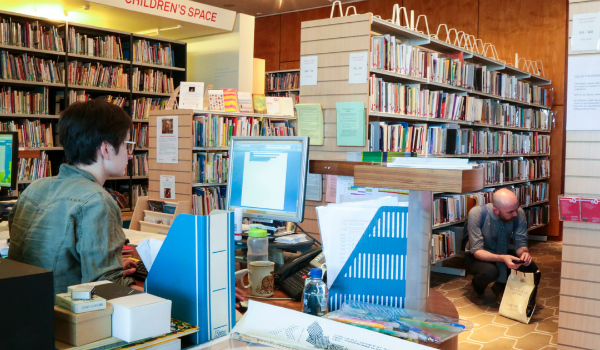
2. Find the words at the Poetry Library
As someone who takes funeral services, I’m often called upon to find the words when no one else can. I rarely consult traditional funeral poetry books which just seem to repeat the same poems we’ve heard so many times. So I’m often found at the Saison Poetry Library on the fifth floor of the Royal Festival Hall, which is home to the most comprehensive collection of poetry in the UK. It’s a quiet and tranquil space dedicated to words in their many poetic forms.
Whatever kind of loss you are experiencing, if you’re looking to put it into words, the Saison Poetry Library is the place to do so.
“Are you exploring the collection or studying poetry?” the librarian always enquires when I ask for the Wi-Fi password. They do this to stop anyone who might be using the library’s internet to do something of less poetic merit, such as checking Facebook.
“Yes,” I always reply, even if I’m using the quiet space to write a funeral service.
After all, what is life, and death, if it isn’t poetry?
http://www.poetrylibrary.org.uk/
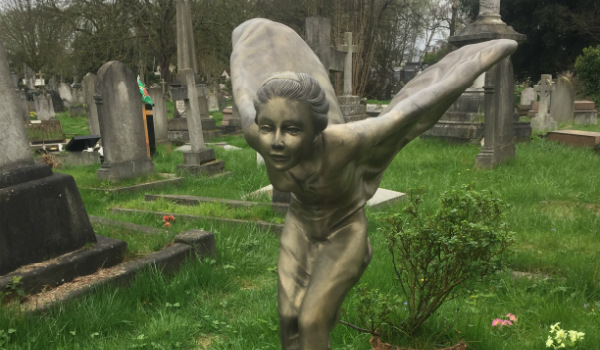
3. Visit the Spirit of Ecstasy
London is blessed with the ‘Magnificent Seven’ Victorian cemeteries – Kensal Green, West Norwood, Highgate, Brompton, Abney Park, Nunhead and Tower Hamlets. Each is worth a visit in its own right, especially if you’re up for a lazy Sunday of comparing stone angels and reading the many Victorian euphemisms for ‘died’ that are now forever engraved in stone.
My favourite cemetery has to be the very first ‘great garden of sleep’, the sprawling Kensal Green which is a spectacular 72 acres of graves in varying states of repair next to the Grand Union Canal.
My favourite memorial of all time is the Spirit of Ecstasy, which sits on top of the grave of one Thea Cannonero Altieri.
The Spirit of Ecstasy is the ornament which sits on the bonnet of Rolls-Royce cars. She was designed by sculptor Charles Robinson Skyes, who was commissioned to design an ornament to adorn cars in “the spirit of the Rolls-Royce, namely, speed with silence, absence of vibration, the mysterious harnessing of great energy and a beautiful living organism of superb grace”.
A life-sized Spirit of Ecstasy sits on top of Thea’s grave, who was born on 21st June 1910 and died on 29th October 2000. She’s hidden amidst the Victorian graves and can be difficult to find if the grass meadows of Kensal Green haven’t been cut. But if you can find her, she’s everything Skyes set out to design and more. Little is known about Thea, but I can only presume that she was a beautiful living organism of superb grace who drove around in a spectacularly stylish Rolls-Royce.
http://www.kensalgreencemetery.com/
4. Watch Anatomy of a Suicide at the Royal Court
“I have stayed. I have stayed – I have stayed for as long as I possibly can.”
A new play about three generations of women struggling with their predecessors’ legacies is coming to the Royal Court in June. Little is known about this new work from playwright Alice Birch and director Katie Mitchell, other than that it comes with a trigger warning. If it’s anything like other plays at the Royal Court, it will be hard-hitting, impactful and worth booking tickets for as early as possible.
From 3rd June to 8th July
Royal Court Theatre
5. Explore the funeral industry
There’s nothing like daily doses of death to keep you alive. Before I began work as a funeral professional, I spent a summer observing funerals from the gallery space of a crematorium in South London.
Funerals are (usually) not private affairs. Observing them is a brilliant way to see not just the conveyor belt of crematorium funerals, but also the conveyor belt of life. It’s surprisingly life-affirming.
Not all funeral directors are the same. If you’d like to talk to a modern, progressive and all round brilliant funeral director about funerals, whether it’s your own or someone else’s, then head to Compassionate Funerals in Wanstead.
Their premises look nothing like a traditional funeral directors. They have exposed wooden floors, a turquoise colour scheme and nice lighting. And most importantly, the people who work there are approachable, lovely and very knowledgeable. They’ll help you put together the funeral you want, and not try to sell you a ghastly funeral plan. Even if you have no imminent need of a funeral, go there for a cup of tea and an honest chat about death. You can even take a stroll around the City of London Cemetery next door and enjoy a bacon sandwich at the café in the Gatehouse.
http://www.compassionatefunerals.co.uk/
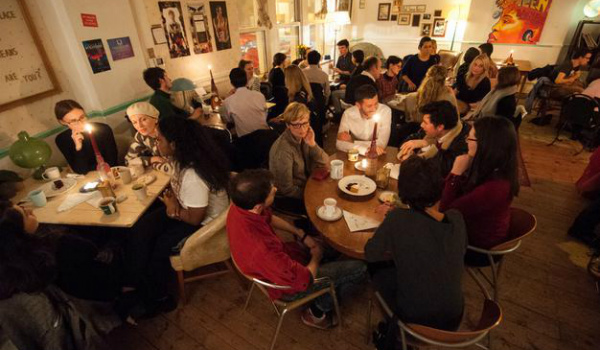
6. Talk about death at a Death Café
Tea, cake and chat about the inevitable is on offer at a Death Café near you.
Quite simply, a Death Café is a gathering where strangers come together to talk about death whilst drinking tea and eating cake. Over 4000 Death Cafes have been held around the world since the movement began in Jon Underwood’s front room in Hackney in 2011.
Death Cafés are run by volunteers so come in many forms and take place everywhere from front rooms to cemeteries, tea shops and local libraries. You can find your nearest Death Café by typing in your postcode on the Death Café website.
You can’t run a Death Café without providing good quality cake. When discussing something as unknown and uncertain as death, something as reassuringly of this realm as cake is essential.
Please note that Death Café is simply a conversation about death. It doesn’t provide bereavement support, grief counselling or group therapy.
St Joseph’s Hospice in Hackney will be hosting a Death Café during Dying Matters week on Wednesday 10th May. Email c.learner@stjh.org.ukto book your place.
Find your nearest Death Café at http://deathcafe.com/
7. Laugh about it
I’m not sure how many laughs there will be at this cabaret at Watermans in Brentford, but comedy and theatre is the best way I know to begin what can potentially be an awkward conversation about the inevitable.
A Festival of Sex, Love & Death lands in London at the end of June at the Pleasance Theatre. Watch Oscar Wilde’s delirious final moments, listen to the story of a man who woke up to find himself dead and buried, and hear about the painfully tragic and short life of one Beatrice Gunta Mortgage.
http://www.headfirstproductions.org/current-production
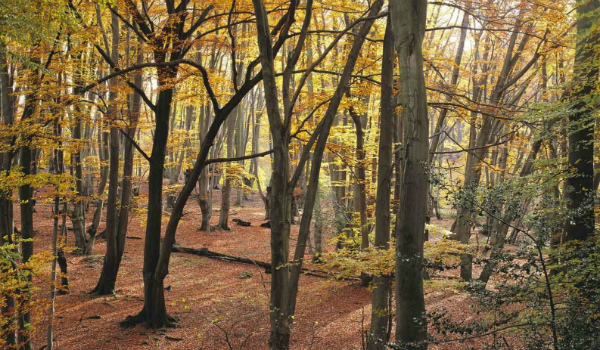
8. Go for a walk in Epping Forest
There’s nothing quite like a stroll through nature to see the cycle of life and death in action.
Epping Forest is easily accessible from Central London via the Central Line so there’s no excuse not to take a Sunday and get lost in London’s largest open space with its ancient trees and sunlit glades.
If you need some inspiration to get you there, try reading Will Ashon’s new book ‘Strange Labyrinth’. It’s an exquisite exploration of London’s magical forest and the meaning of life itself.
